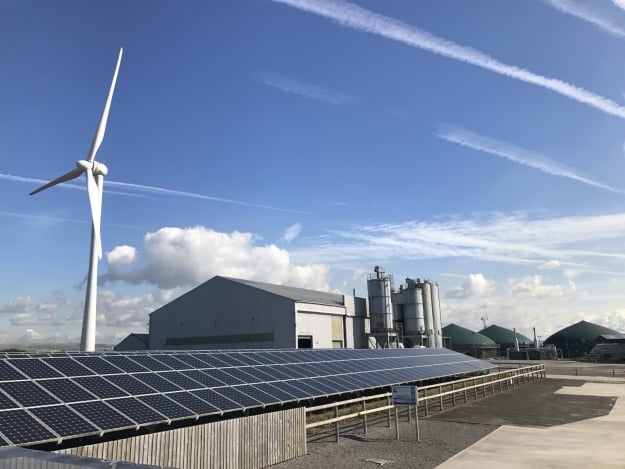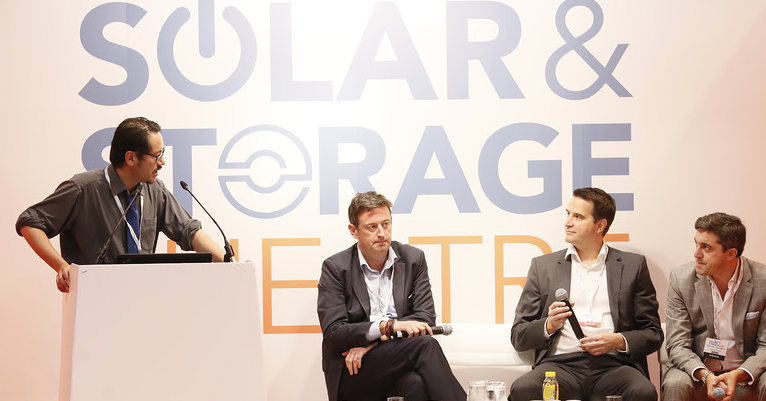Bringing a proven, flexible, virtual power plant (VPP) platform into North America is a step towards “unleashing the potential” of distributed energy, the chief commercial officer of UK-headquartered solutions provider Kiwi Power says.
The company began life in 2009 as a pure-play aggregator in its homeland, where initially the main value was in demand response (DR) opportunities. Over that time, that progressed in tandem with the UK energy market’s ongoing evolution to include many other types of distributed energy resources (DERs), including battery energy storage.
Enjoy 12 months of exclusive analysis
- Regular insight and analysis of the industry’s biggest developments
- In-depth interviews with the industry’s leading figures
- Annual digital subscription to the PV Tech Power journal
- Discounts on Solar Media’s portfolio of events, in-person and virtual
For example, Kiwi Power operations system analyst Paul Soskin blogged for this site in late 2019 about the economic importance of managing cell degradation against the use of battery assets across multiple revenue opportunities throughout their lifetime.
Kiwi now manages over 1GW of DERs in more than 10 countries, having begun licensing its technology to other aggregation entities and electric utilities in European territories including France, Belgium, the Netherlands, Switzerland and the Czech Republic.
CCO Stephan Marty tells Energy-Storage.news that these customers take the Kiwi VPP platform, which includes software and hardware, and “use that platform to build up their own aggregation business”. Helping stakeholders in the electricity supply value chain to integrate more renewable energy and balance networks with monetisable services is also the cost-effective route to a low carbon world, Marty argues.
According to a report from consultancy Brattle Group which is referred to on Kiwi Power’s own website, in the US, there is something like 200GW of potential to provide load flexibility between now and 2030 equivalent to 20% of peak demand under current market design structures. A further increase of around 80GW could be enabled during the next decade by “market transformation,” the consultancy said. With that comes the potential to unlock US$15 billion of benefits to the US system nationally every single year.
Kiwi Power's Stephan Marty spoke with Energy-Storage.news editor Andy Colthorpe about the launch, which was reported last week including a licensing deal with ENGIE North America, as the latter goes about managing flexibility services in the fast-growing ERCOT market in Texas, with deals in more territories to come for Kiwi's VPP platform.

One thing that stands out is that unlike in the UK, where you’re known as an aggregator, Kiwi Power’s launch into North America will see you licensing your virtual power plant (VPP) platform to aggregation entities. What’s behind that decision?
We started more than 10 years ago now as a pure aggregator in the UK. We’ve kept our aggregation business, but from 2016, we [also] started to offer our technology and expertise on a license basis to license takers, typically electric utility companies or aggregators in Europe.
They basically use the VPP platform to build up their own DER aggregation business. So they’re using the same tool that our own aggregation business in the UK uses and we bring our expertise to them on how to set up their business, what’s a good customer, how to manage your battery and so forth.
We’re bringing that VPP model over to the US now because we’ve seen the US is really moving [forwards], with FERC 841 and some other developments. It’s a little bit behind Europe so far but it’s following the same trajectory overall. The reason really [why not to also do the aggregation] is that we believe the value is in the software ultimately.
It’s about how you make sure that the inherent flexibility in DERs, batteries and others are leveraged to help the grid.
Each market has different market designs and ways to monetise the assets. From a software point of view is it simple to adapt to each different market and what are the challenging aspects of adapting?
A lot of the software is the same. Ultimately the physics are the same in all the grids: they may [define] slightly differently how they monetise it, what the different programmes are called, how fast and how long we need to provide for but fundamentally the physics are the same, the core of our software is the same. Then if necessary we have application programming interfaces (API) so we can take care of that [adaptation].
There may be a little customisation but the core is all the same. The engine that we’re using in different markets that really addresses the fundamentals is the same. That’s on the software side.
On the hardware side, actually, we’re using the same hardware everywhere, in Europe and in the US as well. The certification is a bit different so we had to go through UL certification and some other certifications but it’s the same hardware.
The definition of VPP has meant a lot of things to different people. Some narrow definitions from early on were just around frequency regulation or demand response, for example. How would you loosely define a VPP? Are they aggregated systems that only do things old school thermal plants would do or is it about a lot more?
The real difference [today] comes in that VPPs need to be ready to handle the price-based energy markets in an optimal way. If you look at the evolution – and this is one of the reasons why we’re very keen to go to the US as well – historically there was a lot of DR management which would be aggregated and put into tertiary primary frequency control service.
This is really moving – as we’ve seen in the UK – towards direct participation of DERs in to the energy market: day-ahead, short-time, real-time and imbalance markets. For that you need different solutions, you look at the price, at the forecasts, you look at merit-based portfolios, and dispatch it accordingly based either on real-time prices or on forecasted prices.
That’s a different ballgame. That’s what we’ve done and what we’re bringing over to the US because we’re already used to this with batteries in the UK, you see it in Europe as well. You don’t really see that in the US yet, but it will come.

The initial move across the Atlantic from Kiwi announced officially last week is tied in with ENGIE North America in Texas’ ERCOT market while PJM Interconnection and Canada’s IESO markets were also mentioned. As difficult as it is to generalise across the diversity of state-by-state market regulations, policies and dynamics, can you summarise those and other opportunities in North America a little bit?
We’re already active in ERCOT and the IESO. ERCOT is very interesting because it’s an energy-only market and it really has large price swings, which you see now even energy storage sites being built to take advantage of. Very similar again to what’s happening in the UK where you build these on merchant risk these days.
ERCOT is one we’re looking at and peak load-wise it’s already bigger than the UK. PJM as well, CAISO is quite an interesting one and IESO as well. There’s also a lot going on with New England ISO as we know – it’s a bit smaller but that’s already quite a developed market. So: ERCOT, PJM, CAISO, IESO and NYISO those are key markets for us. But there will be much more to come.
What sort of customers are you looking to work with? Looking at the US over the last year or two, people know about the big utilities and vertically-integrated utilities, but you also have municipals and cooperatives that do a good portion of the supply.
Electricity suppliers, asset owners, aggregators, potentially distribution grid operators as well, as you know we’re doing some work on this over in the UK as well, typically those would be our customers.
We would absolutely be looking at the smaller end as well: munis, coops, there are many of those. The way we built the platform is for scale and that we have a very cost-efficient approach to it, we’re definitely looking at working with coops and munis as well and the key one there is that you have technology that is ‘productised’ if you want, and is ready to go, can easily be adapted to the local market.
So absolutely yes, we’re obviously looking at the large integrated utilities as well, they may be a bit slower to move, sometimes – sometimes not – but munis and coops are absolutely on our list to talk to, they are definitely part of it as well and they may be able to move quicker.
Finally, Kiwi Power’s CEO Jay Zoellner was among the industry folk that commented for us on the importance of FERC Order 841 to open up the US market and accelerate the energy transition. Could you elaborate on the impact of that on energy storage in the US?
It’s obviously crucial, we’re very happy to see that that was upheld, in the second-highest court. At a high level, if we want to go to a really decarbonised system, you have to have a lot of renewables. And if you have a lot of renewables, then you’re going to need a lot of energy storage and DER flexibility which really means that the value moves from the generation of power to the provision of flexibility, to the system. For that you need a platform – which we provide.
For us that’s really key and FERC 841 really helps to allow batteries to play into this market because historically a lot of them were just doing behind-the-meter, peak load avoidance or maybe time of use tariffs: but if you can free them up to play in the market like has happened here in the UK, then clearly you unleash a lot of potential and we have seen it in the UK – so many batteries have come in, have taken over the frequency market completely, they will take over the short-term trading market as well, very soon and there is still a lot more being built, so it’s very exciting to see that slowly but steadily the US is moving in that direction.
Cover Image: Battery storage system using Tesla Powerpacks managed and optimised by Kiwi Power in the UK. Image: Kiwi Power.

